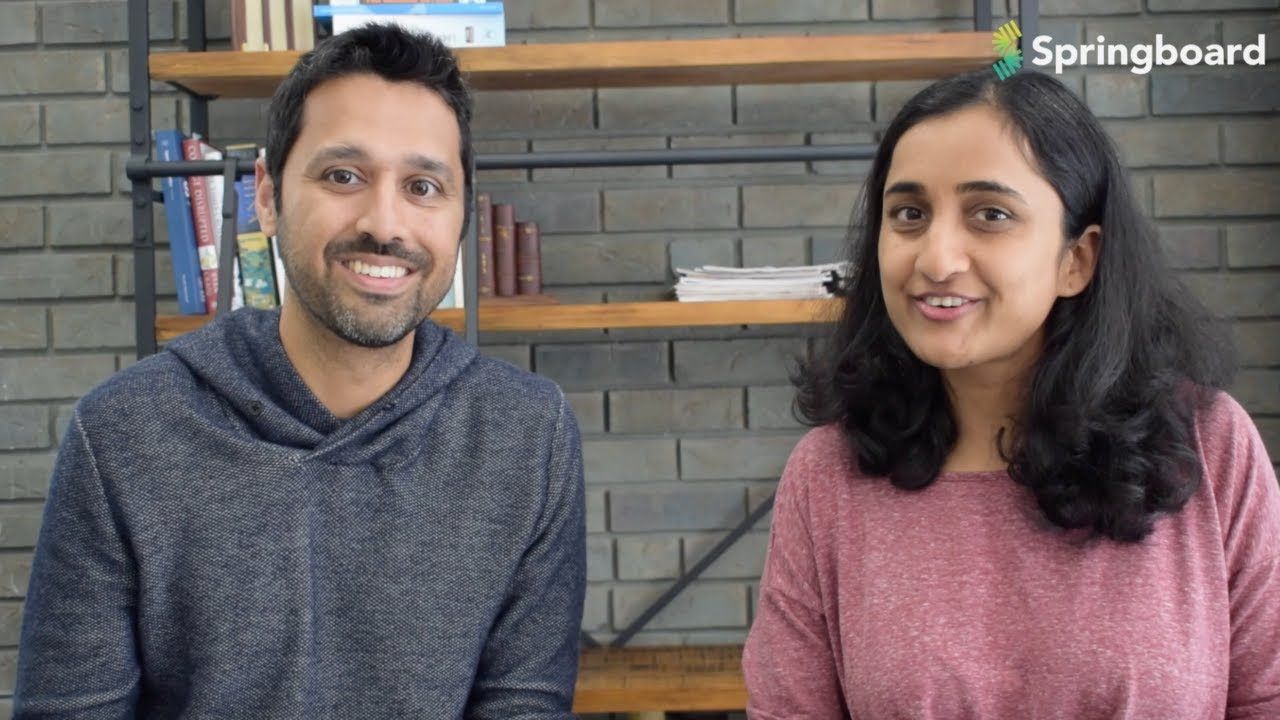Episode Summary
So what’s fundraising during a pandemic really like? Gautam Tambay — co-founder and CEO of online education platform Springboard — has the skinny on that. On this episode of “How I Raised It,” he talked about the strategies he used to raise in the midst of the COVID-19 pandemic.
Gautam and his co-founder started raising their $31 million Series B round on April 1, 2020, just a few short weeks after parts of the United States initiated shelter-in-place and social distancing guidelines. They closed the round at the beginning of August.
Seven years ago, Gautam’s sister applied to graduate school to pursue a degree in UX Design. She got into a bunch of programs, but the $100,000 price tag ended up deterring her, and she didn’t enroll. Around the same time, Gautam’s now co-founder Parul Gupta, took an online machine learning class for her job and realized that virtual learning was the future of education.
So, they put their heads together to build a product that would transform online education. That’s how Springboard was born.
In total, Gautam and Parul have raised $53 million. In this episode, Gautam describes how they found their first few angel investors, why they leveraged SAFE (simple agreement for future equity) notes, and the journey across all their rounds.
Also discussed in this episode: what it’s like to fundraise during COVID-19, how conversations with investors change depending on the funding round, how to change your rejection mindset, and more.
How He Raised It
💰 Who: Gautam Tambay
💰 Company: Springboard
💰 Where to find him: Twitter | LinkedIn
💰 Money quote: “VCs like to invest in lines, not dots. They want to see multiple data points.”
💰 Noteworthy: Since COVID-19 shut down sections of the economy, Springboard has seen an uptick in customers. With more people making career changes and the growing need for online education resources, Sprinboard’s business model has benefited — making it attractive to investors.
Capital Gains
[8:53] Origin story 👉 Seven years ago, Gautam’s sister turned down grad school because she didn’t want to take out a six-figure loan. Gautam and his now co-founder knew there had to be a better way for people to pursue new skills and careers. So, they built Springboard.
[15:22] Playing it SAFE 👉 Springboard’s seed round consisted of multiple SAFE notes stacked. This made their funding journey more continuous than discrete.
[16:40] Find people who’ll take a bet on you 👉 The first set of checks they got were from angel investors who had known Gautam or his co-founder for a long enough time that they were willing to take a risk on them.
[17:06] Avoid trying to fundraise during the holidays 👉 They started trying to raise a million-dollar round in November. They didn’t get their first commitment until early January and barely scraped together $560,000.
[19:23] Seek out the believers 👉 Change your mindset. Turn fundraising into a quest to find those who really believe in you. Rejection isn’t failure — it’s discovering a non-believer.
[21:21] Different rounds, different conversations 👉 Seed round investors typically write one to maybe 25 checks a year, whereas Series A investors write one or two. You have to convince the latter that you’re wonderful because this could make or break their career.
[22:28] Pick the right investor at the VC firm 👉 Do your due diligence and make sure you pick the best fit. Because if a partner says no, that firm is likely closed to you until next round.
[24:58] Build relationships with investors outside of fundraising 👉 Have coffee with them, get to know each other. Don’t make every meeting into a pitch.
[32:14] Accept the ‘no’ and gather intel 👉 If an investor declines, don’t try to convince them otherwise. Thank them, then ask them about the reasoning behind their answer.
Top Quotes From the Episode
“Fundraising is not an exercise in convincing the people who don’t believe right now. It’s a search for the believers.”
“This is something that’s valuable in fundraising, but also in life and business in general. When someone says ‘no,’ take it seriously. It’s very rare that you’ll be able to turn that around and convince them to say ‘yes.’”
“Investors are investing in the business and the metrics. The story just gets you the ticket to play.”


